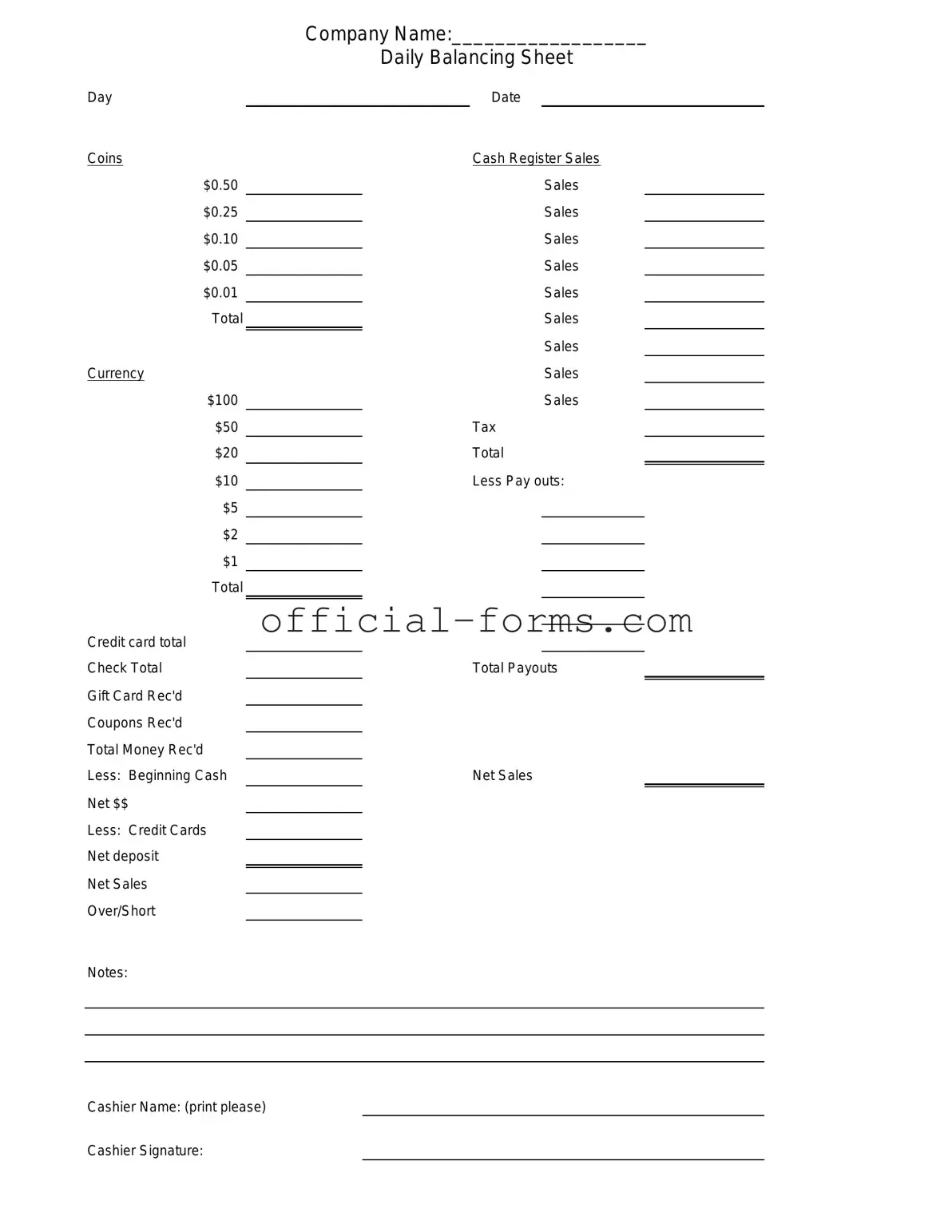Blank Cash Drawer Count Sheet Form
The Cash Drawer Count Sheet is a financial tool used to record and verify the cash balance in a cash drawer at the end of a business day. This form helps ensure accuracy in cash handling and provides a clear record for reconciliation purposes. By documenting cash transactions, businesses can maintain accountability and streamline their financial processes.
Open My Cash Drawer Count Sheet Now
